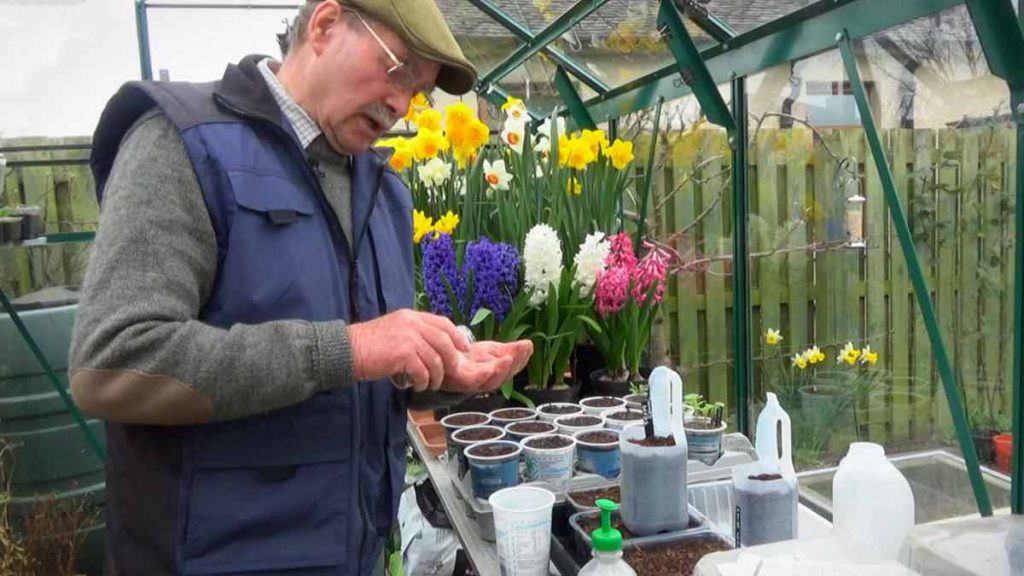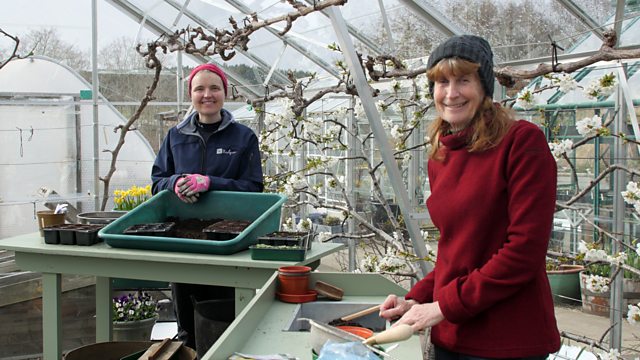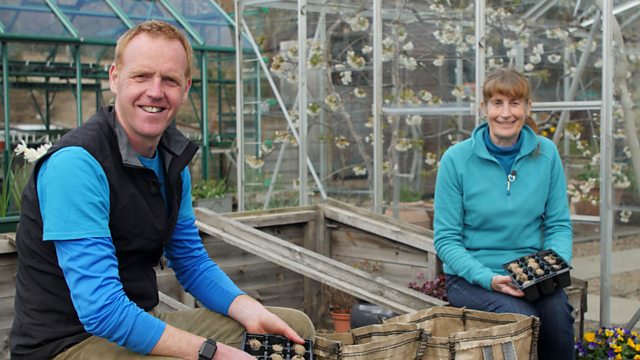The Beechgrove Garden 2021 episode 19: The tattie harvest is in full swing at Beechgrove. From contemporary tatties to heritage tatties to tatties in containers, it’s Beechgrove tattie howking time.
From the very tall to the very small, Brian and Carole prove that there is a tree fit for everyone’s gardens and this week they branch out into trees for a small garden.
We visit an award-winning garden on a seaside cliff edge in Buckie. Despite their garden’s precarious and exposed position, Elizabeth and Malcolm Schofield have created a colorful plant-filled haven that’s not just for their own enjoyment but for the delight of passers-by.
The Beechgrove Garden 2021 episode 19
Potatoes
Potatoes are hugely versatile and a staple ingredient of many meals in one form or another – boiled, mashed, chipped or baked. Potatoes are classified as being either earlies or maincrops. Early varieties are ready to harvest much sooner than maincrops and are what we call ‘new potatoes’. Maincrop varieties are in the ground a lot longer. They produce a larger harvest and bigger potatoes.
Potatoes are grown from specially prepared ‘seed’ potatoes (or tubers). These are just like potatoes you buy from the supermarket, but they’re certified virus-free. You can buy seed potatoes from late winter onwards. You then start them off indoors by letting them sprout, before they are planted.
Potato plants need ‘earthing up’ as they grow, to protect early shoots from frost damage and ensure the developing potatoes aren’t exposed to light, which turns them green and poisonous.It’s a simple process – once the stems are about 23cm (9in) tall, draw soil up around them, creating a ridge about 15cm (6in) high. As the stems grow, repeat the process several times. The final height of the ridge should be 20–30cm (8in–1ft).
Keep the plants well watered in dry weather – particularly once the tubers start to form. Maincrop potatoes benefit from a nitrogen-rich fertiliser around the time of the second earthing up.
Trees
Trees can bring so much to a garden, including shade, fruit, autumn colour, fragrance, flowers, height; and also offer very valuable environmental benefits. After the first year or two, trees need little maintenance or pruning and usually look after themselves with just a little routine care. If well chosen and managed, their ultimate stature and spread should not become an embarrassment.
There is no need to apply fertiliser in the first growing season. The roots should be encouraged to grow out into the surrounding soil in search of nutrients and moisture to establish a healthy root system. On infertile soils, feeding the year after planting may be beneficial. Apply a balanced, general-purpose feed over the entire root area at about 70g per square metre (2oz per square yard) in the spring.




